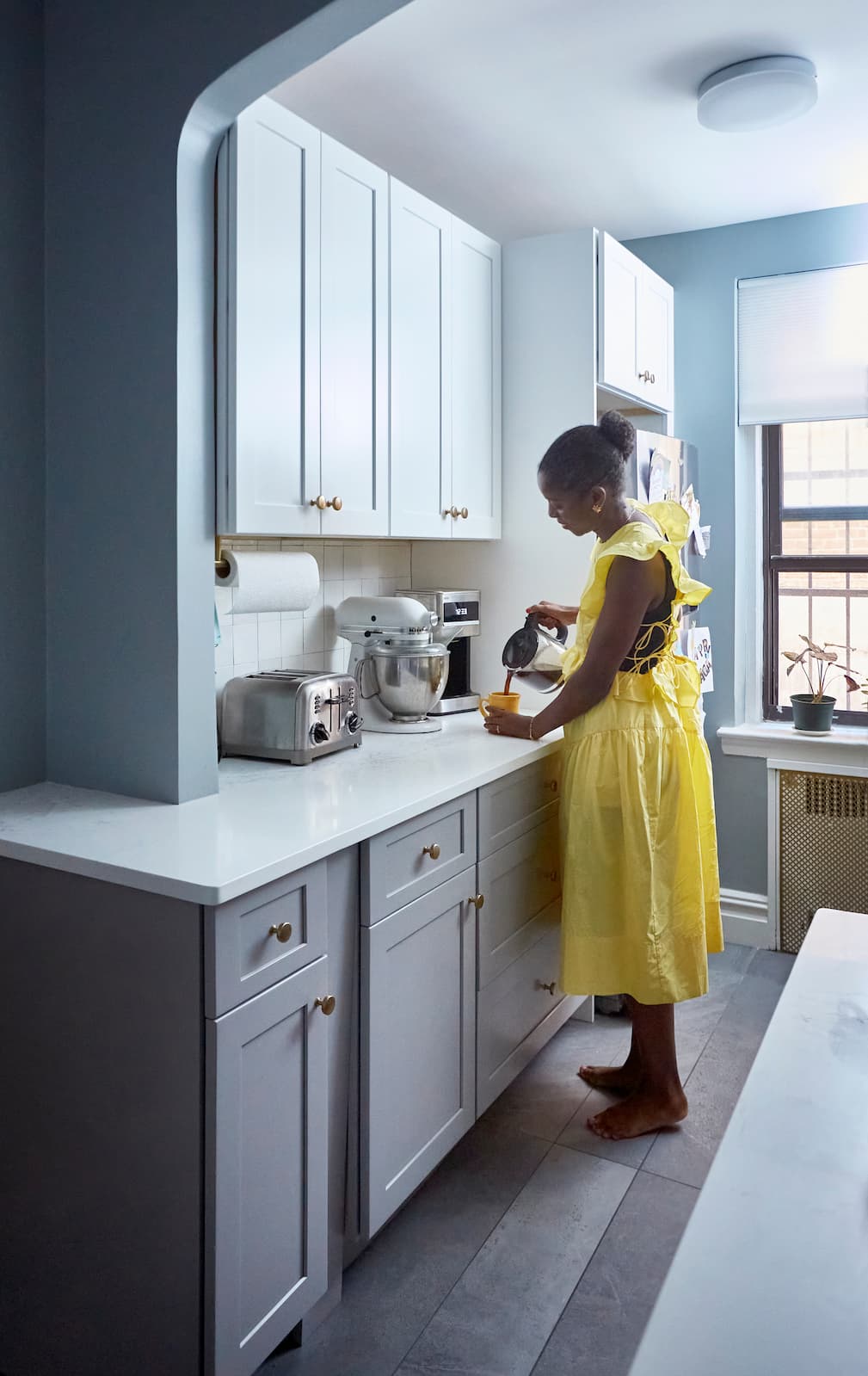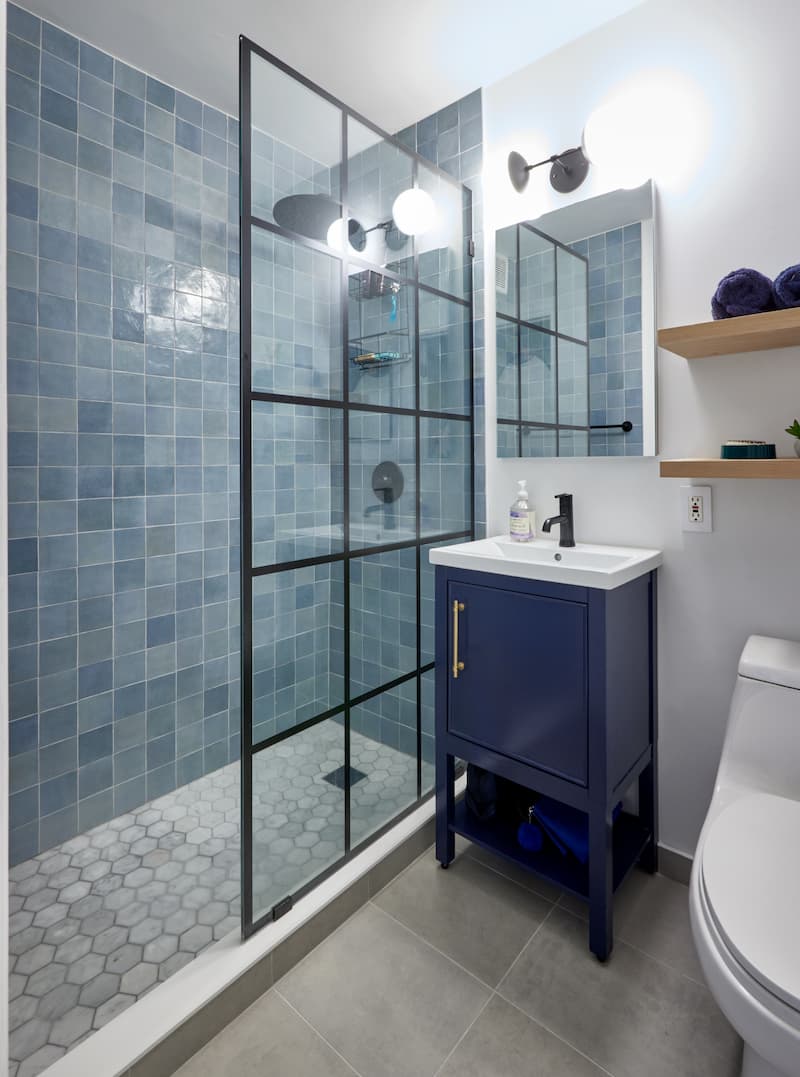1920s House Renovation: Updatings Its Interior Without Losing Historic Charm

In This Article
Renovating a 1920s house's interior is a chance to bring new life to a home with real character. These homes often feature beautiful craftsmanship, unique architectural details, and a sense of history that’s hard to replicate. Whether you’re restoring a Craftsman bungalow, a stately Tudor, or a classic Colonial Revival, the goal is to honor the original style while making the space comfortable and functional for modern living. With thoughtful planning, you can remodel a 1920s house in a way that celebrates its past and supports your lifestyle today.
Iconic home styles from the 1920s
The 1920s saw a burst of architectural creativity across the United States. Here are some of the most common home styles from the era, along with the regions where you’re likely to find them:
Craftsman house
Craftsman homes are known for their low-pitched roofs, wide front porches, and exposed woodwork. You’ll often find them in California, the Pacific Northwest, and parts of the Midwest. Inside, look for built-in cabinetry, original hardwood floors, and detailed trim. When renovating, consider restoring woodwork and keeping the open, airy feel that defines the Craftsman style.
Tudor house
Tudor homes stand out with their steeply pitched roofs, decorative half-timbering, and tall, narrow windows. These homes are especially common in the Northeast and Midwest. Interiors often feature arched doorways, stone or brick fireplaces, and dark wood beams.
Bungalows
Bungalows are cozy, single-story homes with wide front porches and overhanging eaves. They’re especially prevalent in California, the Midwest, and the South. Inside, you’ll find efficient layouts, built-in benches, and lots of natural light.
Colonial revival
Colonial Revival homes are inspired by early American architecture, with symmetrical facades, multi-pane windows, and columned entryways. Popular during the 1920s—and other time periods as well—these homes are common along the East Coast and in older suburbs nationwide; drive through the leafy green Philadelphia suburb of Bucks County, and you’ll see Colonial architecture galore. Interiors often feature formal dining rooms, fireplaces, and detailed moldings.
Mediterranean
Mediterranean homes, popular in California and Florida, are known for their stucco exteriors, red tile roofs, and arched windows. Inside, you’ll find textured walls, wrought iron details, and colorful tile.
Cape cod
Popular in the 1920s, Cape Cod homes are compact, with steep roofs, dormer windows, and simple, symmetrical lines. They’re most common in the Greater Boston area and New England but can be found in older neighborhoods across the country. Interiors are often cozy, with wood paneling and built-in storage. For inspiration, read Cape Cod Remodeling Ideas & How-Tos.
Ranch homes
While ranch homes became more popular in the 1940s and 1950s, early versions appeared in the late 1920s, especially in the West and Southwest. These homes are single-story with open layouts and large windows. Renovation ideas include updating kitchens for better flow, adding sliding doors to connect indoor and outdoor spaces, and preserving original brick or stonework.
Turn your renovation vision into reality
Get matched with trusted contractors and start your renovation today!
Find a Contractor
Preserving 1920 interior Design within your remodel
A big part of renovating a 1920s house is honoring its original interior design. Here’s how to keep the period charm while making your home work for today:
1920s color schemes
The 1920s favored rich, saturated colors—think deep greens, navy blues, and burgundy—often paired with creamy neutrals. For a lighter touch, soft pastels like mint, peach, and pale yellow were also popular. Use these hues on walls, trim, or even cabinetry to echo the era’s palette. For example, a living room painted in a deep forest green with ivory trim can feel both classic and current, while a kitchen with pale yellow walls and black-and-white tile nods to the period’s playful side.

Art deco prints as accents
Art Deco was a defining style of the 1920s, known for bold geometric patterns and metallic accents. When remodeling, try adding an Art Deco-inspired wallpaper to an accent wall, or use geometric tile in a bathroom or kitchen backsplash. Framed vintage prints, mirrors with etched designs, or even a statement rug can bring this look to life. For a subtle touch, consider throw pillows or curtains with fan or chevron motifs.

For more inspiration for your 1920s home, read Art Deco Bathroom Design & Remodeling Ideas.
Restore original woodwork
Many 1920s homes feature beautiful woodwork—think wide baseboards, crown molding, window casings, and built-in cabinetry. If these details are intact, refinishing or repairing them can instantly elevate your renovation. Strip away layers of old paint to reveal original wood grain, or repaint in a period-appropriate color. If woodwork is missing or damaged, consider custom millwork to match the original profiles. Built-in bookcases, benches, and hutches are all worth preserving or recreating.
Keep or recreate period lighting
Lighting from the 1920s often featured glass globes, brass or bronze finishes, and geometric or floral motifs. If you have original fixtures, have them rewired for safety and keep them as a focal point. If not, look for vintage or reproduction pieces—like globe pendant lights, brass sconces, or chandeliers with stepped or fan-shaped details. In bathrooms, consider wall-mounted lights with frosted glass shades for a soft, flattering glow.
Design a Home That’s Uniquely Yours
Block can help you achieve your renovation goals and bring your dream remodel to life with price assurance and expert support.
Get Started
Use classic tile patterns
Tilework was a hallmark of 1920s interior design, especially in kitchens and bathrooms. Subway tile, hexagonal floor tile, and colorful mosaic borders are all true to the era. For a 1920s bathroom remodel, consider a black-and-white hex tile floor with a border, or a kitchen backsplash in classic white subway tile with dark grout. Mosaic “rug” patterns in entryways or bathrooms add a touch of vintage artistry.

Highlight fireplace details
Fireplaces were often a centerpiece in 1920s homes, featuring decorative tile, brick, or stone surrounds. If your home has an original fireplace, restore the tile or brickwork and consider adding a period-appropriate mantel. If the original has been removed, look for salvaged materials or reproduction tile to recreate the look. Displaying vintage andirons or a classic firescreen can complete the effect.

Install picture rails or wainscoting
Wall treatments like picture rails and wainscoting add architectural interest and are true to 1920s interiors. Picture rails allow you to hang art without damaging plaster walls, while wainscoting protects walls and adds texture. Consider beadboard or raised panel wainscoting in dining rooms, hallways, or bathrooms. Paint these features in a contrasting color for a classic look.

Choose hardware with 1920s character
Small details like door knobs, cabinet pulls, and switch plates can make a big difference in your 1920s remodel. Swap out generic hardware for glass, brass, or porcelain pieces that match the home’s age. Look for hexagonal glass knobs, ornate brass backplates, or black porcelain pulls. Even light switch covers can be upgraded to period-appropriate styles for a cohesive look.
Mix old and new thoughtfully
A successful 1920s renovation balances vintage charm with modern comfort. Pair restored vintage elements—like original wood floors or built-ins—with contemporary furniture, lighting, or art. For example, a sleek modern sofa can look right at home in a living room with original moldings and a classic fireplace. In the kitchen, modern appliances can be integrated with period cabinetry and tile for a space that feels both fresh and timeless.

Restore or recreate stained glass
Stained glass windows and transoms were popular decorative features in 1920s homes, especially in entryways, bathrooms, and stairwells. If your home still has original stained glass, consider having it professionally restored to repair any cracks or fading. If not, you can commission custom panels or use stained glass film to recreate the look. Even a small stained glass accent can add color, artistry, and a sense of history to your space.

Incorporate vintage radiators or covers
Many 1920s homes were heated with cast iron radiators, which can be both functional and beautiful. If your radiators are still in place, have them cleaned and repainted in a period-appropriate color, such as deep green, navy, or classic white. If you need to replace or cover them, look for vintage-style radiator covers with decorative grilles. These can double as display shelves and add architectural interest to living rooms, bedrooms, or hallways.

Use plaster wall finishes
Smooth or subtly textured plaster walls were a hallmark of 1920s interiors. If your home’s original plaster is in good shape, preserve it by patching and repainting. For damaged areas, consider hiring a specialist to match the original finish. If you’re remodeling or adding new walls, opt for a plaster finish instead of drywall for a more authentic look. Decorative plaster details, such as ceiling medallions or cornices, can also enhance period charm.
Embrace patterned floors
Patterned flooring—such as checkerboard tile, herringbone wood, or intricate area rugs—was a staple in 1920s homes. If you’re restoring original floors, refinish them to highlight their pattern. For new installations, consider classic patterns in tile or hardwood. Layering in vintage or reproduction rugs with geometric or floral motifs can add warmth, color, and a sense of authenticity to living rooms, dining rooms, and bedrooms.
Renovate with confidence every step of the way
Step 1: Personalize Your Renovation Plan
Step 2: Receive Quotes from Trusted Contractors
Step 3: Let Us Handle the Project Details

Renovating your 1920s home for modern comfort? Areas worth looking at
While preserving the unique style of a 1920s house is rewarding, updating for comfort, safety, and efficiency is just as important. Here are key areas to focus on when remodeling a 1920s home:
Electrical systems
Many 1920s homes still have original knob-and-tube wiring or fuse boxes, which may not be equipped to handle today’s electrical loads. Outdated wiring can pose fire risks and limit your ability to use modern appliances, lighting, and technology. Upgrading the electrical system typically involves rewiring, adding grounded outlets, and installing a modern circuit breaker panel. This is also the time to add extra outlets in kitchens, bathrooms, and living spaces, as well as hardwired smoke and carbon monoxide detectors for added safety. If you’re planning to add central air, electric car charging, or a home office, make sure your new system can support these needs.
Plumbing
Original plumbing in 1920s homes is often made from galvanized steel or cast iron, which can corrode, clog, or leak over time. These issues can lead to water damage, low water pressure, or even unsafe drinking water. Replacing old pipes with copper or PEX ensures reliable water flow and reduces the risk of leaks. While updating plumbing, consider replacing old fixtures with water-efficient models and adding shut-off valves for easier maintenance. If your 1920s home has a basement, check for signs of moisture or sewer backup, and address any drainage issues.
Insulation and windows
Many homes from this era have little to no insulation in walls, attics, or crawl spaces, making them drafty and expensive to heat or cool. Upgrading insulation as part of your 1920s home renovation can dramatically improve comfort and energy efficiency. Blown-in cellulose or spray foam can be added to walls and attics with minimal disruption to original finishes. Windows are another key area—original wood windows can often be restored with new weatherstripping and storm windows, preserving their character while improving performance. In some cases, replacing windows with high-quality replicas may be the best option for energy savings and comfort.
Kitchens
Kitchens in 1920s homes were typically small, closed off, and designed for a different era of cooking. Modernizing the kitchen often means opening up the layout to connect with dining or living spaces, adding more storage, and updating appliances. While doing so, look for ways to preserve or recreate period details, such as original cabinetry, tile, or built-in breakfast nooks. Consider integrating modern conveniences—like a dishwasher, pull-out pantry, or under-cabinet lighting—while keeping the overall look in harmony with the home’s style.
Bathrooms
Bathrooms from the 1920s may feature charming tilework and vintage fixtures, but they often lack the amenities and space today’s homeowners expect. Upgrading plumbing and adding proper ventilation are essential for comfort and preventing moisture issues. Consider reconfiguring the layout to add a walk-in shower, double vanity, or extra storage. If you’re restoring original tile, work with a specialist to repair or replicate damaged sections. Heated floors, modern lighting, and water-efficient fixtures can all be added without sacrificing period charm.
Heating and cooling
Older homes often rely on radiators, boilers, or even gravity furnaces, which can be inefficient and difficult to control. Upgrading to a modern HVAC system—such as forced air, mini-splits, or radiant floor heating—can improve comfort and energy efficiency year-round. If you love the look of original radiators, consider having them refurbished and paired with a new boiler. Remodeling your 1920s home to add ceiling fans, programmable thermostats, and improved ductwork can further enhance comfort while keeping energy bills in check.
Foundation and structure
The foundation and structural elements of a 1920s home are critical to its longevity. Over time, settling, moisture intrusion, or termite damage can cause cracks, uneven floors, or other issues. Before starting any major renovation, have a professional inspect the foundation, framing, and support beams. Addressing structural concerns early—such as reinforcing joists, repairing cracks, or improving drainage—will protect your home for decades to come and provide peace of mind as you invest in other updates.
Compare Proposals with Ease

Renovate your 1920s home with pros from Block
Remodeling a 1920s house is a rewarding project, but it comes with unique challenges. Block Renovation connects you with experienced contractors who understand the importance of preserving historic details while updating for modern living. Our team helps you plan every step, from restoring original features to upgrading systems and finishes. With clear pricing, expert guidance, and a focus on your vision, you can renovate your 1920s home with confidence—creating a space that honors its past and supports your future.
Frequently asked questions
Can I renovate a 1920s house sustainably?
What about lead paint or asbestos in my 1920s home?
How do I prioritize projects in a 1920s house renovation?
Is it possible to make a 1920s house accessible for people with mobility challenges?
Do older home renovations commonly cost more than renovating newer homes?

Written by Block Renovation

Renovate confidently with Block
Easily compare quotes from top quality contractors, and get peace of mind with warranty & price protections.
Thousands of homeowners have renovated with Block

4.5 Stars (100+)

4.7 Stars (100+)

4.5 Stars (75+)
Renovate confidently
- Top quality contractors
- Warranty & price protections
- Expert resources

